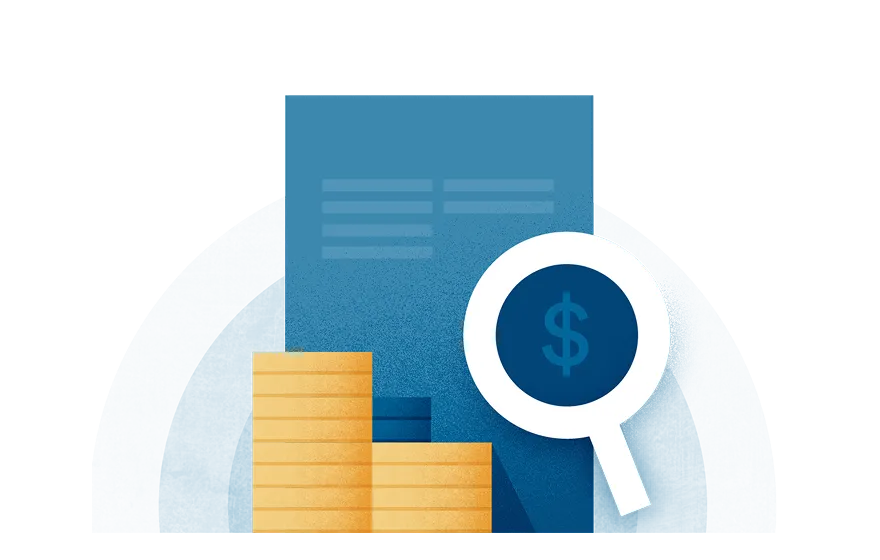If you've spent the past few decades paying down your mortgage and building equity in your home, there are several ways that you can tap into that wealth to accomplish what you need to in retirement.
You may be familiar with a traditional reverse mortgage, often referred to as a Home Equity Conversion Mortgage (HECM). But if your home is on the higher end of the market, there’s another option worth considering: a jumbo reverse mortgage. In this post, we’ll break down everything you need to know—from the benefits and potential drawbacks.
How a jumbo reverse mortgage works
A jumbo reverse mortgage works similarly to a traditional reverse mortgage, but it’s designed for higher-value homes. As of 2025, the maximum amount of money homeowners can take out in a reverse HECM mortgage is $1,209,750.
Here are the basics:
- Tap into your home equity: Instead of making monthly mortgage payments, you can convert a portion of your home’s value into cash. This can provide a lump sum, monthly payments, or a line of credit—whatever works best for your needs.
- No monthly payments: With a jumbo reverse mortgage, you don’t owe anything as long as you live in the home. The loan is repaid only when you sell the house, move out permanently, or pass away.
- Eligibility: For some lenders, you can be as young as 55 to qualify for a jumbo reverse mortgage. Additionally, your home must be your primary residence, and it must be paid off or have a low enough loan balance that a reverse mortgage can help pay it off.
- Interest and fees: Interest accrues over time, and there may be upfront fees and closing costs. These costs are typically added to the loan balance rather than paid out-of-pocket, but they do reduce the total equity you can leave to heirs.
- Conditions: Homeowners must still pay property taxes, homeowners' insurance, and maintain their homes.
- Repayment: When the home is sold or the borrower no longer lives there, the loan balance—including interest and fees—is due. If the home sells for more than the balance, the remaining equity goes to you or your heirs. Jumbo reverse mortgages are non-recourse loans, which means that your heirs are never going to owe more than the home is worth.

Jumbo reverse mortgage vs. HECM reverse mortgage
There are a few key differences between a jumbo reverse mortgage and an HECM reverse mortgage that homeowners should consider:
Jumbo reverse mortgages
- Issued by private lenders; not federally insured
- Ability to borrow up to 4 million or more, depending on the lender and your home's appraised value
- No mortgage insurance required
- Homeowners as young as 55 can apply
Traditional HECM reverse mortgages
- Issued by the Department of Housing and Urban Development (HUD)’s approved lenders and federally insured
- Ability to borrow a maximum of just over 1.2 million
- Homeowners must be age 62 or older
- Homeowners must undergo mandatory counseling to determine whether a HECM is a good fit for them
Pros and cons of a jumbo reverse mortgage
Here are some benefits and drawbacks to jumbo reverse mortgages.
Pros
- You get access to larger loan amounts than traditional reverse mortgages.
- There are no monthly mortgage payments.
- Mortgage insurance is not required.
- A wider selection of property types may be accepted.
- Loan proceeds are not considered taxable income.
Cons
- Jumbo reverse mortgages typically have higher interest rates than what you'd find with other home equity products, like home equity loans or home equity investments, which don't charge interest at all.
- Jumbo reverse mortgages are not backed by the federal government, which means consumers need to conduct more due diligence when selecting a lender.
- Reverse mortgages have higher costs and fees compared to a HELOC (Home Equity Line of Credit) or a home equity loan.
- Jumbo reverse mortgages have limited availability. Currently, only a few lenders offer jumbo reverse mortgages.
- Taking out a jumbo reverse mortgage can affect your estate and reduce the inheritance you leave behind.
Alternatives to jumbo reverse mortgages
If a jumbo reverse mortgage isn’t the right fit, there are other ways to tap into your home’s equity. Here are some common alternatives:
Home equity investment (HEI)
With an HEI, you get a lump sum payout in exchange for a share of the home’s future appreciation. There are no monthly payments over a 30-year term. Instead, you repay the borrowed amount plus the agreed-upon percentage of appreciation (change in home value, not total value) when you’re ready to settle the investment.
Although both reverse mortgages and home equity investments (HEI) offer no monthly payments, they are very different:
- An HEI doesn’t require you to pay off your first mortgage.
- You can be any age to qualify.
- Income is not a factor.
- An HEI is assumable by heirs.
Home equity loan
A home equity loan provides a lump sum upfront that you repay over a 5- to 10-year term via fixed monthly payments. Although it tends to be cheaper than a reverse mortgage, it can be harder for retirees to qualify for due to income and credit score requirements. Home equity loans also require monthly payments, which can strain a fixed budget.
However, because there are fewer conditional requirements, it can be a better option for some.
It may make sense if you need a specific amount for a one-time expense, have a steady income to cover monthly payments, and prefer a predictable repayment schedule.
Home equity line of credit (HELOC)
A HELOC is a revolving line of credit secured by your home. You can borrow, repay, and borrow again up to your credit limit during the draw period, usually 5–10 years. Similar to home equity loans, HELOCs have stringent credit and income requirements.
HELOCs offer flexibility and you pay interest only on what you borrow. However, monthly payments can rise if interest rates increase, and your home serves as collateral.
A HELOC can make sense if you need ongoing access to funds, want flexibility in how much you borrow, and have the ability to manage variable monthly payments.
Frequently asked questions
How large can a reverse mortgage be?
An HECM reverse mortgage is capped at just over $1.2 million; a jumbo reverse mortgage can be as much as $4 million or more.
What if you outlive your reverse mortgage?
Your reverse mortgage loan is due when you sell your home, pass away, or have to leave your house to enter a care facility. However, if you live in your home as your primary residence and pay your taxes and insurance, you can remain in your home indefinitely.
Can you sell your house after you have a reverse mortgage?
Yes, you can sell your house if you have a reverse mortgage. However, any proceeds you receive from the sale will first be used to pay off the loan balance before you receive any remaining equity.
What happens when a reverse mortgage exceeds the value of a home?
Fortunately, most jumbo reverse mortgage loans are non-recourse loans. So, if there is a recession and housing prices drop substantially, you (and your heirs) are protected and will not owe more than the home is worth by law. Just make sure the non-recourse clause is in your loan paperwork before you sign.

Final thoughts
Although a jumbo reverse mortgage is an option for retirees who want to take advantage of their high-value homes, this financial product comes with significant fees and interest costs.
Another alternative to consider is a home equity investment. Similar to a reverse mortgage, you can access your home equity without monthly payments. The benefit of an HEI, however, is that you don’t need to pay off your first mortgage, and you can be younger than 55 to apply for one. If you want to learn more about home equity investments, visit Point.
No income? No problem. Get a home equity solution that works for more people.
Prequalify in 60 seconds with no need for perfect credit.
Show me my offer
Frequently asked questions

Thank you for subscribing!
.webp)















